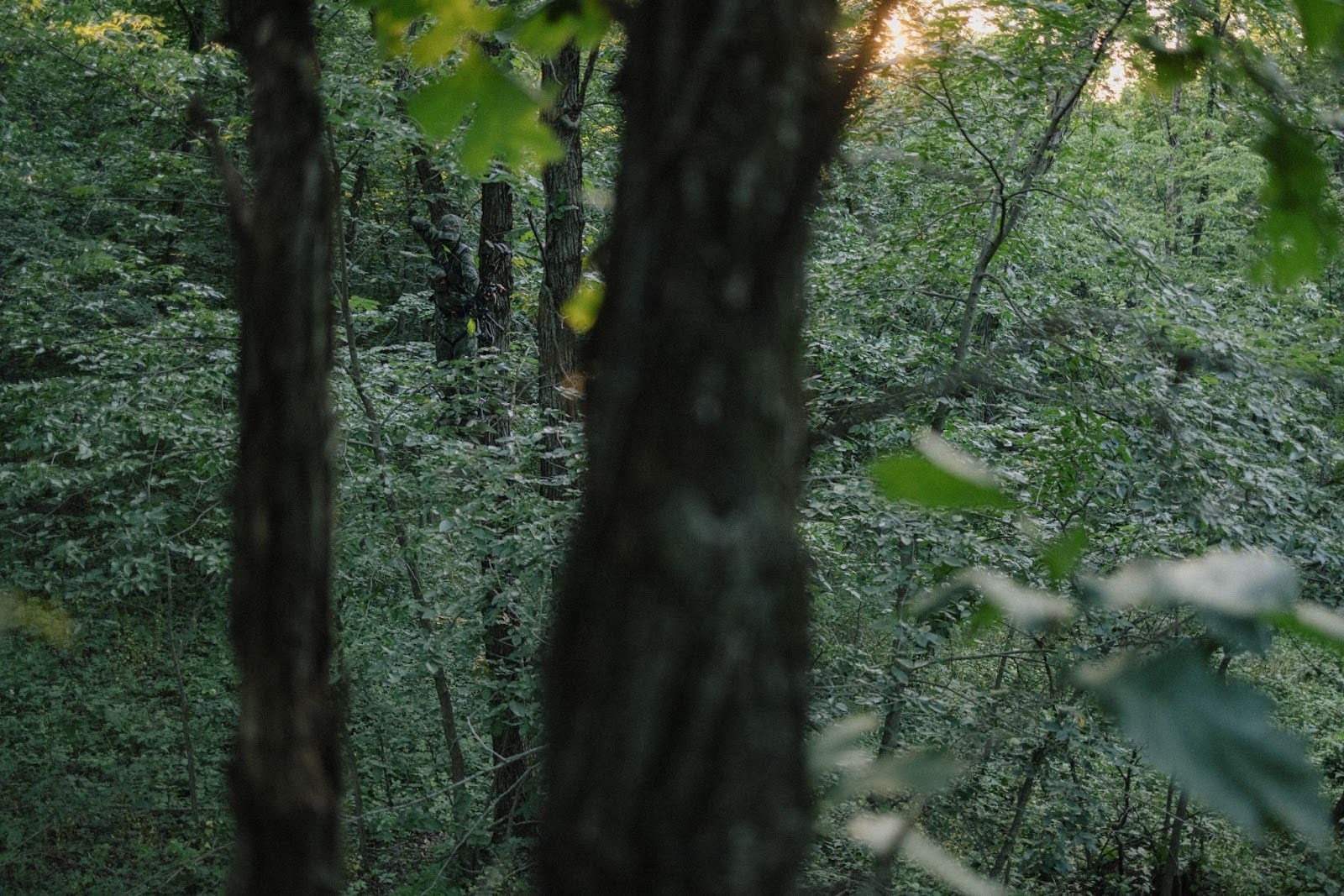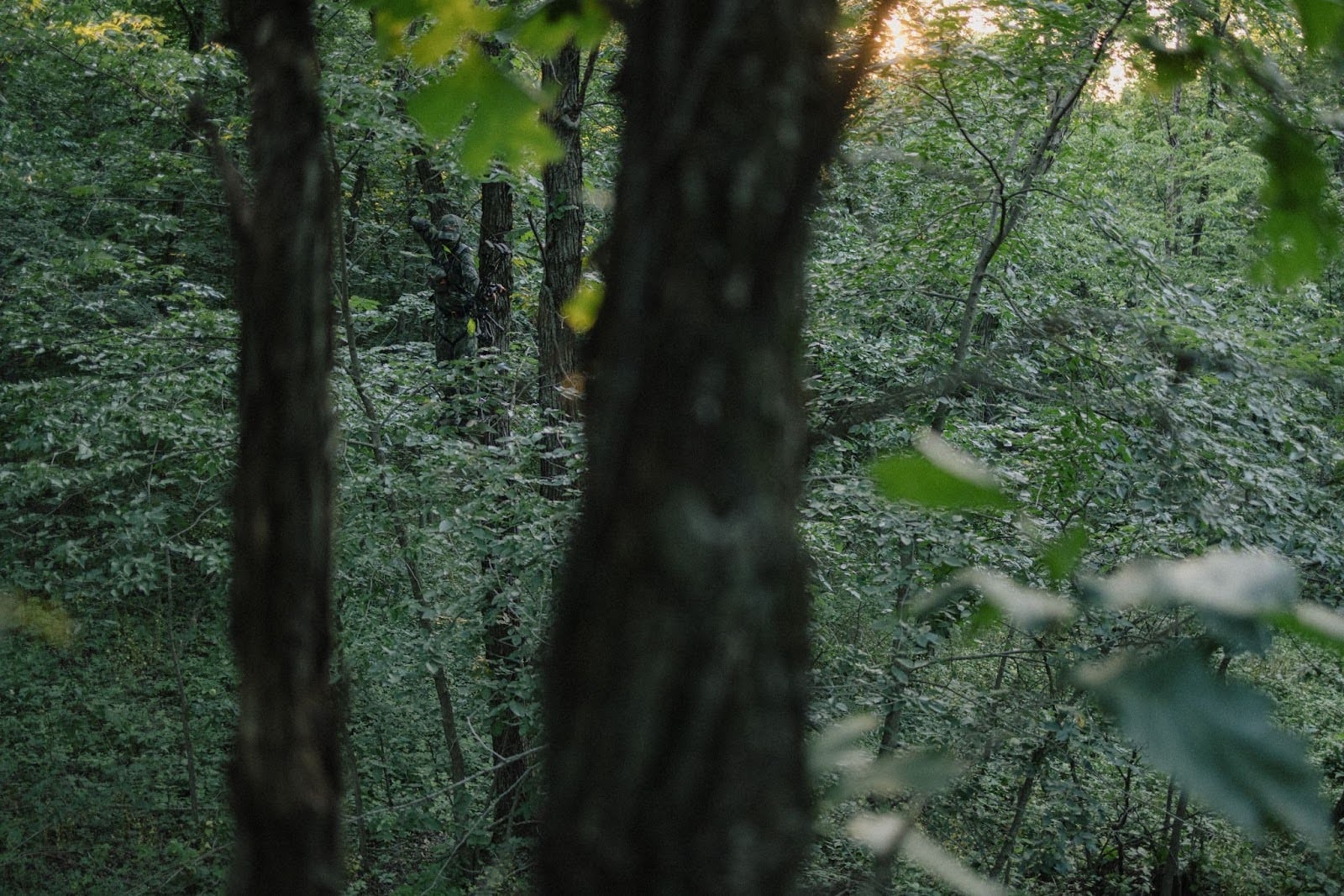Joe Fields | 7.31.2025
What to Wear Deer Hunting for a Successful Hunt
What to Wear Deer Hunting for a Successful Hunt
Perfect shots don’t happen by chance; they’re the product of stealth and preparation. Remaining quiet, patient, and alert is a must, but that’s not the only thing that makes a difference. The hunting apparel you choose has the ability to make or break a hunt, whether you’re deer hunting during balmy early-season days or gnashing late-season winds. Luckily, when it comes to determining what to wear deer hunting, we’ve got you covered.
Quality deer hunting gear keeps you comfortable, concealed, and ready to take aim, regardless of your conditions. It will keep you warm and dry when the weather takes a turn for the worse and it will keep you cool, calm, and collected on the warmest days of the season.
But how do you decide what to wear deer hunting for maximum comfort and success? Look at the world from the deer’s perspective, and never underestimate the elements.
Understanding Deer Vision and Camouflage
Deer don’t see like humans do. To avoid detection, you need to dress in a way that takes advantage of their eye structure and field of vision. This makes understanding deer vision essential when choosing your camouflage and deciding on effective techniques for your next hunting trip.
How Deer See the World
Eyes convert light into information. To do this, they use two types of photoreceptors to transform incoming light waves into signals the brain can comprehend. These photoreceptors are:
Rods – Handle low-light situations; don’t detect color
Cones – Spring into action at elevated light levels and power color perception
Deer eyes feature far more rods than cones. This makes them sensitive to UV rays, but poor at color detection. Rods also sense lightwaves with short wavelengths, making it easy for deer to pick up shades like green and blue, but rendering them nearly blind to reddish hues (which feature long wavelengths).
When a deer surveys its environment, any colors that fall on the red or green end of the spectrum appear as the same general color and, therefore, won’t stick out, while blue screams, “Look at me!” And because rods are exceptional at navigating dim lighting, deer eyes thrive in the low light of dusk and dawn.
In short: A deer’s night vision trumps that of humans, but when it comes to daytime vision and color perception, we have them beat.
Choosing Effective Camouflage
Remaining unseen while lying in wait relies on strong camouflage. Effective camo blurs your silhouette and helps you blend into the background by exploiting deer’s lack of color awareness and adapting to their excessive UV sensitivity.
The best camo for a deer hunt consists of the colors your quarry struggle to pick out:
Green
Red
Brown
Orange
Camo Types
When it comes to camo hunting gear, there’s no plug-and-play option. The right disguise depends on a few things, but most importantly the terrain and the time of year:
Terrain: Will you be hiding in the deep woods, or against a barren, rocky landscape?
Time of year: Lush greenery requires a different camo palette than snow-covered foliage.
Fortunately, hunting clothes feature a variety of camo exteriors to match any setting. Some of these types of camo patterns include the following:
Subalpine – This camo type imitates the appearance of forest surroundings. It often features branches and leaves while restricting its coloring to green, black, and brown.
Open Country – Featuring a heavier dose of gray than other styles, open country camo best suits sparse, rocky terrain.
Cover – Designed specifically for hunting in greener, leafier environments, with increased levels of green and deeper shadows in the pattern – perfect for disrupting a deer’s vision.
Grays – When faced with a bleak, snowy backdrop, gray camo helps you blend in. It utilizes white and gray shading to mimic wintry surroundings.
When deciding what to wear deer hunting, start by taking stock of the environment and expected conditions and go from there.
Layering for Comfort and Functionality
Humans didn’t receive the gift of natural armor or fur. When we venture into the wild, we’re at an inherent disadvantage.
While in the field, you may spend hours in the same spot, exposed to the elements. You may also need to quickly move from one position to another. To stay sharp and comfortable throughout your hunt, it’s important to dress in functional layers that let you keep your mind on the task at hand and not on how uncomfortable you are.
Think of it in two stages: base layers and outer layers
Base Layers
The foundation of effective hunting apparel is a base layer. Your body temperature will fluctuate as the weather shifts and as you move throughout the hunt, so your primary hunting base layer should perform two key functions:
Wick moisture: Whenever you exert yourself, your body cools itself by producing moisture: a.k.a. sweat. This moisture serves you well when you’re overheating, but can become irritating or dangerous as you cool off. Your base layer should work to move excess sweat away from the skin and keep you from getting cold.
Keep you warm: Besides helping the body’s cooling mechanism work its magic, your base layer should also trap heat on cold days. This helps keep your core at prime operating temperature and allows you to focus on your surroundings.
When it comes to base layer materials, merino wool is a top choice, especially in cold weather. It offers supreme moisture-fighting powers, while also retaining heat. You should also choose interior gear that readily works with additional layers like a hunting fleece jacket, as conditions are almost guaranteed to shift throughout the day.
Outer Layers and Insulation
Once you’ve selected your base layer, next you’ll need to choose layers to help you stay warm and keep the elements at bay.
The wilderness can be unforgiving, and conditions can turn on a dime. An insulation layer guards against these weather changes. During active portions of the hunt, you probably won’t need to wear it, but when you’re waiting for whitetails and the temperatures drop, it’s an essential layer to have on hand.
Finally, since you don’t know what the surroundings will throw at you, your go-to hunting jacket should be an ironclad outer layer that should always be part of your kit. Effective outerwear features fabrics that do the following:
Repel wind and water
Pack a high UPF (ultraviolet protection factor)
Promote mobility
When choosing what to wear deer hunting, ensure your outer layers provide concealment (camouflage), and that they are made with materials that don’t make too much noise, helping you avoid tipping off your prey.
Essential Hunting Apparel from SITKA Gear
SITKA Gear offers a full spectrum of hunting equipment for deer hunters. Let’s walk through some essential items, tailored to the season and scenario.
If you’re planning to hunt deer early in the season, you’ve got better odds of pleasant weather, making it less likely you’ll require heavy-duty gear. But mid and late season missions? They’re another story.
Stay prepared for harsh and erratic conditions. Here are some options for when the weather turns:
Dew Point Jacket – This triple-layered GORE-TEX jacket offers elite rain protection alongside first-class breathability. Its micro-taped seams keep things lightweight, and it features zip vents for rapid cool-downs.
Hudson Jacket – Combining the best in mobility with body-mapped insulation, the Hudson Jacket covers all the bases. It fends off water and wind while ensuring optimal warmth and protection, even in the roughest weather.
Downpour Pant – Most rain pants swish as you move, but this spells doom for anyone tracking a buck at close range. The Downpour Pant shuts out water and allows your skin to breathe while maintaining silence.
Specialized Gear for Different Hunting Scenarios
Every hunt carries unique challenges, and special situations require special tools.
At SITKA, we draw on generations of hunting experience to craft durable and targeted accessories for every hunter, including:
Flash Optics Harness – For hunters who prefer to canopy cover, binoculars help scope out targets, while rangefinders allow them to gauge shot distance. Store and access both tools in streamlined silence with the Flash Optics Harness.
Turkey Tool Belt – Turkey hunters: Compress the storage capacity of a traditional vest into a sleek, sturdy package with this belt. When you strike a bird, don’t waste a second—simply spin the tool belt and tap into its cluster of call pockets.
Delta Zip Waders – No one fights to stay dry more than waterfowl chasers. Become invincible with the Delta Zip Waders. The GORE-TEX exterior offers elite mobility and protection, while the fortified knee and shin padding render ice and scrub a non-issue.
The recipe for a successful hunt boils down to a trifecta of stealth, mobility, and protection. Achieve all three by arming yourself with world-class gear, expertly tailored to each scenario.
Additional Considerations for Deer Hunting Attire
Visibility and safety: Hunters wield lethal force while concealed amidst rugged surroundings. It’s critical to remain visible to your fellow hunters. Blaze orange hunting gear, like the Stratus Vest, allows for supreme stealth without sacrificing security.
Harsh conditions: Hunters must prepare for an onslaught of the elements. Before you embark, consider adding protective gear like the Jetstream Insulated WS Beanie or the Equinox Guard Glove (infused with Permethrin for insect repulsion).
Savor the satisfaction that stems from enduring ferocious conditions. Arm yourself against the elements and telegraph your presence to others.
Suit Up With Sitka Gear for Deer Hunting Success
A victorious hunt taps into a primal desire that runs deep in every hunter’s veins. But triumph doesn’t come easy—it calls for practice and preparation. At SITKA Gear, we’ve made it our mission to equip the intrepid to battle through unforgiving terrain and return in glory.
Proper attire should serve your needs without drawing attention. It should fuse innovation with the wisdom of tradition. It should feel like an extension of the self.
Whether you’re prepping for your first hunt or revamping your hunting system for the upcoming seasons, SITKA is ready to equip you for whatever the wild has in store. Discover our hunting gear today.
Sources
Datacolor. The Role of Rods and Cone in Color Perception.
Penn State College of Agricultural Sciences. “The eyes have it!”
InChemistry. Don’t Sweat It: How Moisture-Wicking Fabrics Keep You Cool and Dry.
Skin Cancer Foundation. Sun Protective Clothing.
Science Direct. Spectral Sensitivity.


